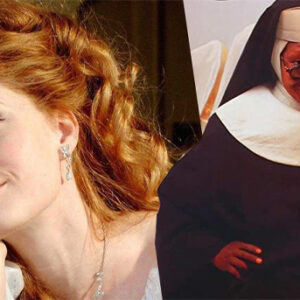Last Updated on August 5, 2021
Ink & Pixel is a source of pride and joy for me as a writer and as such, I’m always striving to take this column further for those who read and enjoy it. In an effort to widen the reach of our continuously growing fanbase, Ink & Pixel has been granted permission to broaden its horizons with the inclusion of films from the Horror, Sci-Fi, and Fantasy genres. I hope that you enjoy this bold new direction for the column. Additionally, if you yourself, or anyone you know, helped to make any of the amazing feature films found within this column, I would love to talk to you to further my knowledge. Please contact me at [email protected] so we can discuss it further.

Have you ever wondered what it would be like to live in an animated world? Imagine if you will: a world in which you could sing and speak with the animals, a place where magic and sorcery were commonplace – and the prospect of an happily ever after ending was just an act of redemption and a kiss away. It all sounds pretty fantastic, doesn’t it? Well, what if the glass slipper was on the other foot? What if a caring, honest, and unassuming princess from that fantasy world were to step into our own? That’s precisely what happens to the character of Giselle in Walt Disney Pictures’ (along with Barry Sonnefeld and Josephson Entertainment) live-action/animated musical, ENCHANTED.

Looking back, 2007 was one hell of a year for Disney. Alongside ENCHANTED, the House of Mouse released such films as the unexpectedly dark and imaginative BRIDGE TO TERABITHIA, Dwayne “The Rock” Johnson’s football player-turned-manny film, THE GAME PLAN, as well as the sci-fi family animation MEET THE ROBINSONS, PIRATES OF THE CARIBBEAN: AT WORLD’S END, and up to 11 other full-length features under the coveted Disney label. Okay, so despite some sizable box office and straight-to-video numbers, not all of the films released that year were memorable gems. However, and I’m even surprising myself with this one, I think ENCHANTED might have been their best effort that particular year. Why, you ask? Well, let’s press on so you can find out.

Disney’s ENCHANTED – directed by Kevin Lima – stars Amy Adams as Giselle, a princess from the animated world of “Andalasia”. After being banished to our real-world Earth by the evil Queen Narissa (Susan Sarandon), Giselle must cope with the denizens and dangers of New York City if she’s ever to return to her own world. Wow, that could very well be the shortest plot synopsis I’ve ever written for this column. Truth be told, because the film is – in more ways than one – a parody of several Disney princess-related animations, you’d be reading this all day if I were to start rattling off all of the clever ways in which the script borrows elements from many of those timeless classics. The story elements are all woven together into an entertaining tapestry that will keep you warm with laughter, romance, and familiarity.

At its core, ENCHANTED is a classic fairytale that unfolds within a modern-day, real-world Manhattan. Doesn’t sound like something that would be too difficult to pull off, right? Wrong. In fact, the screenplay for the film was rewritten and changed hands so many times that we’re all lucky the film got made at all. Don’t believe me? What if I told you that – according to Susan Wiloszczyna of USA Today – the first draft of the film, written by Bill Kelly, was a racy R-rated romp? As you can imagine, the execs over at Disney weren’t very keen on this idea, so the hunt for a more family-friendly script continued. Several passes, failed visions, and a frustrated Disney later, Bill Kelly returned to the scene with a completely re-worked script – as well as a complete storyboard presentation of the entire film. With the director’s confidence restored, he and Kelly pitched the idea once more to Disney, who recognized the treatment as (finally) a loving homage to the classic Disney fairytale princess films of old – and thus production on the film began!

Now, it had been a long time since Disney had ventured into the realm of presenting a film that was part live-action, part animation. As a matter of fact, Disney had not attempted this sort of hybrid presentation since the damn near-perfect WHO FRAMED ROGER RABBIT in 1988. Lima, wanting to ensure the best quality special effects were utilized, turned to Thomas Schelesny – who operated out of Tippett Studio in Berkley, California. Being no stranger to the world of visual effects, Schelesny’s previous work involved films such as STARSHIP TROOPERS, MEN IN BLACK II, and HOLLOW MAN. As an integral part of the film-making process, it was up to Schelesny and his crew to transform the film’s 2D concept art into full-on 3D characters and effects.

All told, Tippett Studios contributed a total of 320 shots for the film, while CIS Hollywood worked on 36 individual shots (most of them involving wire removal), and companies ReelFX and Weta were also in on the project – each helping to complete a total of 6 shots combined between the two FX houses.
Perhaps one of the biggest challenges that Schelesny and his team faced was working on a set that involved the use of both CGI animated and live animals or insects. It’s always fascinated me that, with the proper training, and positive reinforcement – we’ve been able to incorporate real animals into film. Seriously, I don’t think I’m alone on this. It takes dedication, communication, and an arsenal of delicious treats to get it done, but man, I’d be pretty proud of myself if I got several members of the animal kingdom to “act” on-screen.

The challenge with having both live and animated creatures starring in your motion picture is that both presentations need to be used as equally as possible. Take the character of Pip for example. Near the start of the film, Giselle’s chipmunk friend, Pip (voiced by both Jeff Bennett as well as director Kevin Lima), plays a very important part in relaying the whereabouts of the missing princess to Prince Edward (James Marsden). Now, because it’s illegal to own a chipmunk, Schelesny needed to go out into the wild and film squirrels from every conceivable angle in their own natural habitat. That information was then used in conjunction with the Maya and Furrocious computer programs to create a believable 3D animated woodland creature.

When watching the film, I was happy to discover that Pip – in all of his fuzzy fearlessness – remains an important character all throughout the movie. That said, I know from researching all of my Ink & Pixel articles, that working with CGI animated characters can often create frustration for actors who are unfamiliar with the process. According to Schelesny, they’d “use a device like a synchro mark. It essentially is a laser pointer that plugs into the camera and runs out of phase with the camera’s shutter so its mark isn’t seen. I would control where the laser pointer went — pretending I was Pip. The actors would look where the laser pointer went, so we’d get all their eyes looking in the right direction.“

In addition to the synchro device, the film crew also worked diligently with background plates – a series of storyboard photographs that do not include the CGI characters within them – to help expedite the movie making process. Once again, Schelesny explains (in an interview with AWN.com), “After the background plates were shot they cut out the storyboards and did some simple Avid composites that put 2D versions of characters into the real backgrounds to help our animators understand how long their shots should be and how their coverage should work. It was very clear what the mechanics of those scenes needed to be.
“The main difference between 2D animation and visual effects 3D work is that in 2D animation it’s never too late to make a huge change, given a bit of time. In 3D, once the plate is shot, you have nothing but limitations. When you’re on set you’re limited by time and the camera equipment that you have.” Schelesny recalls with a laugh how surprised he was to arrive at one NYC location — a very small bathroom in which they’d stage a musical number where scores of animals help Giselle clean the messy room.

Shooting visual effects plates in cramped quarters was not for the timid, Schelesny admits. “Some of these camera moves were fast whip pans and tilts. We knew we knew we couldn’t do those moves plus have floor effects occurring and still hit our timings. So I called out the timings in half time and we ran the camera at 12 fps. We got whip pans that were super fast and framed perfectly. And it also got us perfect motion blur.“

According to Box Office Mojo, ENCHANTED got its magical mitts on a worldwide total of $340,487,652 by the end of its theatrical run. Domestically, the film garnered $127,807,262 here in the States and throughout Canada. Where the film truly shined, though, was in the foreign market, where 62.5% of its gross was earned with a staggering total of $212,680,390. The film has since gone on to sell like gangbusters upon arriving on DVD and Blu-Ray shelves at every major retailer imaginable, and there’s still whispers on the wind about Disney bringing us a sequel in the years to come.

I’ll be completely honest with you: I didn’t expect to enjoy ENCHANTED. I have a tendency to shy away from musicals and I wasn’t entirely convinced (from what I’d seen in the trailers) that the live-action fairytale angle would work for this particular film. Boy was I wrong! I ended up loving the film, and in the process developed a severe screen-crush on Amy Adams. The film may borrow heavily from many of the Disney princess films of years past, but it manages to do so with such style, that I couldn’t help but admire its flare for detail, fun, and whimsy. Everyone knows that real-world fairytales don’t necessarily come true, but I think its nice that Disney was able to give us all a glimpse at what it might be like if that particular brand of magic came to The Big Apple. See you next time, folks!



















Follow the JOBLO MOVIE NETWORK
Follow us on YOUTUBE
Follow ARROW IN THE HEAD
Follow AITH on YOUTUBE